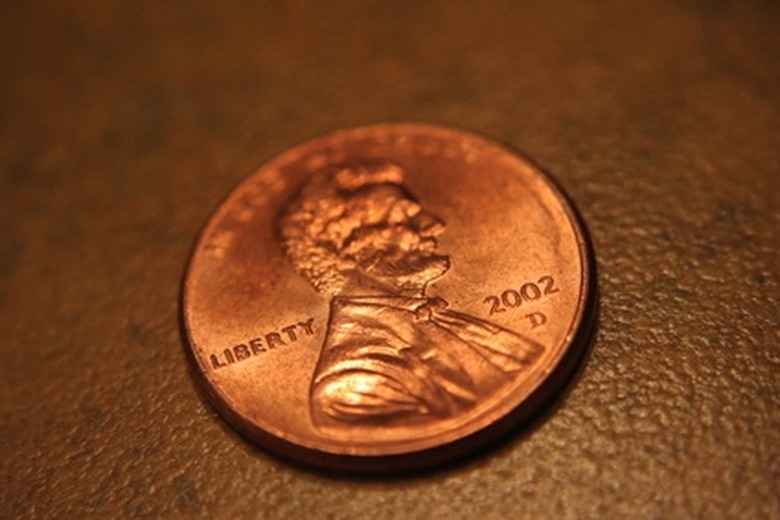How To Rust A Penny
A penny doesn't technically "rust." The copper plating corrodes, resulting in green surface tarnish. The corrosion is from oxidation — a chemical reaction between the metal and oxygen, water and carbon dioxide in the air. Rust is the term used to describe this process when it happens to iron instead of other metals. With pennies, simple exposure to the elements will result in tarnish over time; or you can use common household items to act as a catalyst to chemically speed up the process.
Step 1
Place a copper penny in a bowl or on a plate outside. Check the penny each week to watch as the copper surface slowly corrodes from exposure to the elements. Corrosion will happen more rapidly if you live in a wet area or near the ocean.
Step 2
Lay a penny in a bowl to experiment with rapid corrosion.
Step 3
Pour 1/2 tsp. salt on it and then cover the surface of the penny with vinegar or lemon juice.
Step 4
Wait five to 10 minutes and then remove the penny and place it on a paper towel or plate.
Step 5
Watch the penny through the course of an hour change from bright and shiny — the result of the acid in the vinegar or juice and salt breaking down and stripping away tarnish and dirt from the penny's surfaces — to a green color as the copper reacts with the air.
Things Needed
- Bowl
- Plate
- Salt
- Vinegar or lemon juice
- Paper towels
Cite This Article
MLA
Blake, Irene A.. "How To Rust A Penny" sciencing.com, https://www.sciencing.com/rust-penny-8546741/. 24 April 2017.
APA
Blake, Irene A.. (2017, April 24). How To Rust A Penny. sciencing.com. Retrieved from https://www.sciencing.com/rust-penny-8546741/
Chicago
Blake, Irene A.. How To Rust A Penny last modified August 30, 2022. https://www.sciencing.com/rust-penny-8546741/
